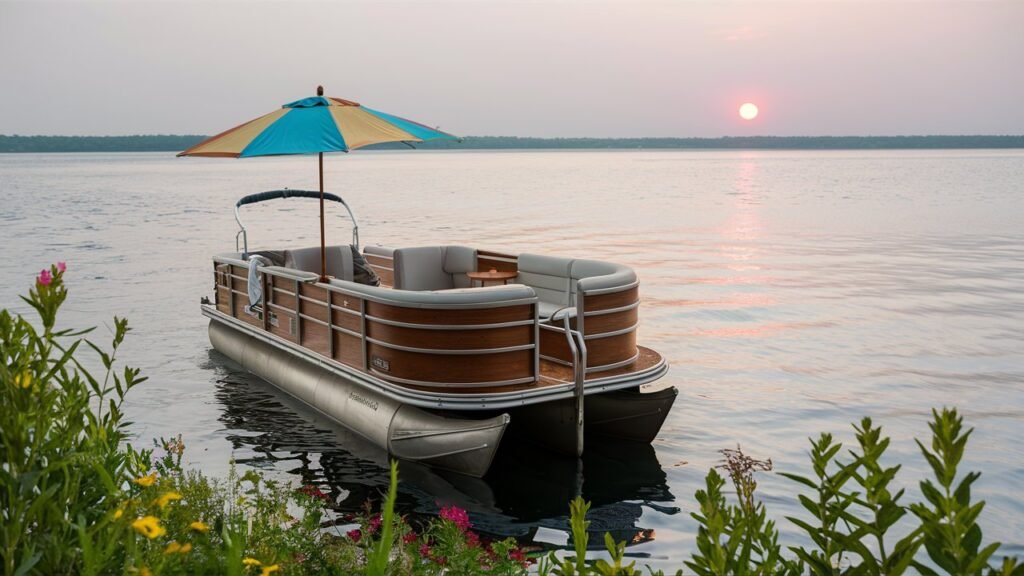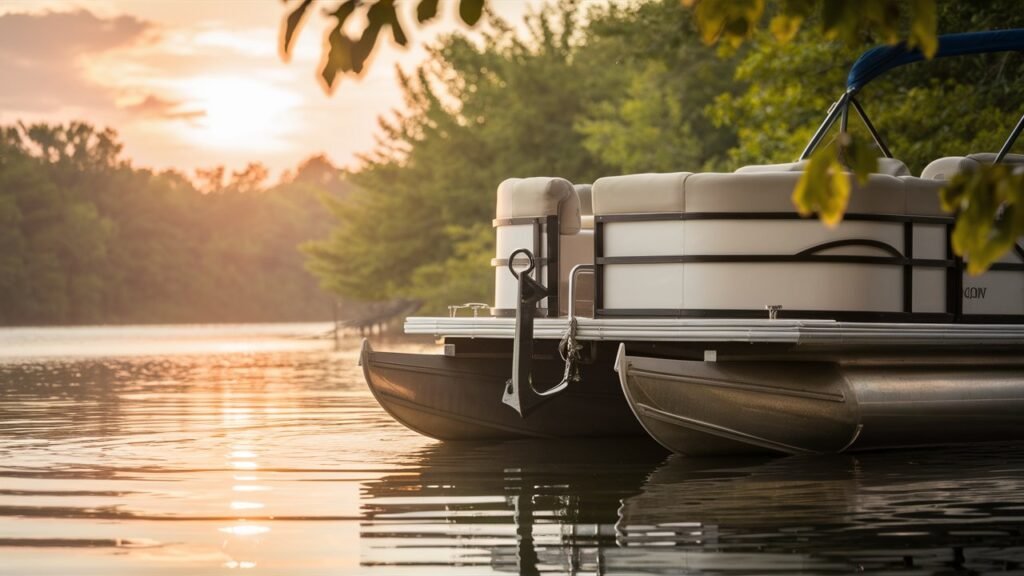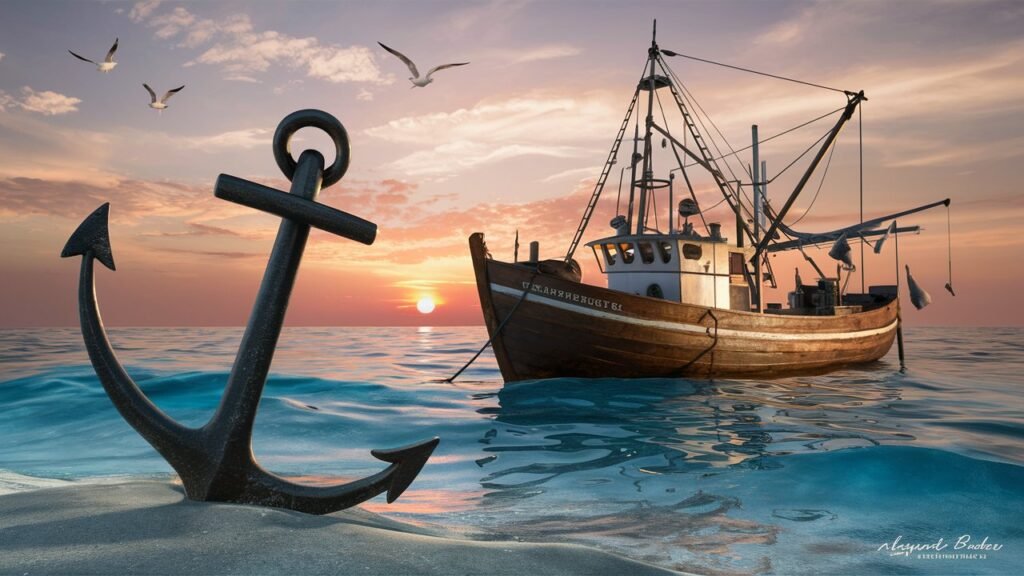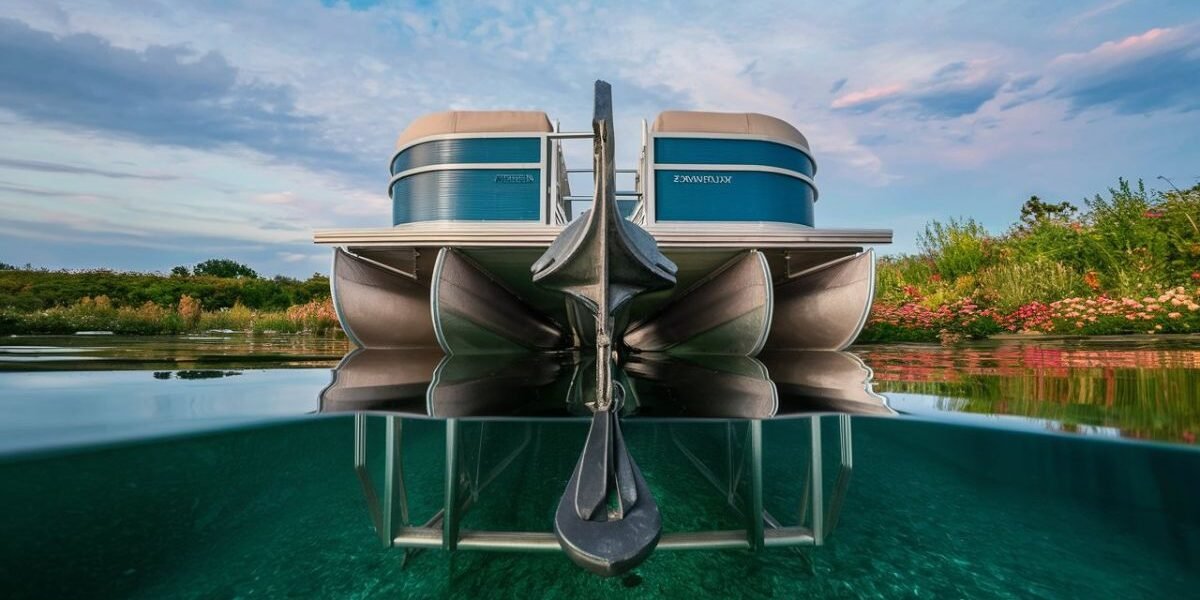Essential Guide: How to Anchor a Pontoon Boat
So, you’ve got yourself a deck boat and you’re ready to hit the water.
But before you can enjoy a day of cruising, fishing, or relaxing with friends, you need to learn how to anchor the boat.
Choose an anchor for your pontoon boat that matches the size of your boat and the type of anchor you used.
A danforth anchor is often used as a good choice for pontoon boats because it can work effectively in rocky bottoms while holding on to the boat.
Make sure that when you set up the anchor, you attach it securely to the boat and check if the anchor rode is long enough according to the depth of water.
The first one should be a large sized one such as a 20 lb danforth anchor which will keep your boat steady.
When you drop it into the water, ensure that it is properly set so that your boat does not drift backwards.
It will help hold your boat in place so that you can have fun on the water without worrying about floating away.
Choosing the Right Anchor for Your Pontoon

Choose an anchor for your boat that corresponds with the size of your vessel and the type of anchor you have used.
For pontoons, a good choice is the danforth anchor; it can work well in rocky bottoms while still keeping hold of the boat.
Ensure that you attach it securely to your boat when setting up and check if the rode is long enough depending on how deep the water is.
The first one should be large such as a 20 lb danforth which will keep your boat steady.
Make sure when dropped into water, it is set properly so that your boat does not drift backwards.
This will help hold your boat in place so you can enjoy yourself on the water without worrying about floating away.
Make sure to put the engine in neutral before dropping the anchor to avoid any accidents.
To spend a safe day on the water, any boating hobbyist must learn how to anchor his pontoon boat securely.
This ability can keep your pontoon still and in one place regardless of changing conditions, and so it needs a person to know what type of anchor is suitable for certain bottoms or situations, such as using fluke anchors on sandy areas but danforths where there are rocks beneath them.
It is also important to realize this means attaching firmly an anchor line onto a cleat on the deck of your boat; otherwise if done carelessly or incorrectly then there may be no way that even with everything else being perfect such as choosing right location etcetera because without secure attachment nothing will work out well enough during anchoring process itself, hence preventing any damage caused by drifting away or being carried off somewhere by wind current alone.
If convenience and efficiency are what you look for in all things boating related, then you should consider investing in an anchor winch. This device will save you from doing it manually while still ensuring that your vessel stays put at its intended spot throughout the entire fishing trip.
You don’t want to end up on a sandbar or damage your boat because you didn’t choose the right anchor!
Types of Anchors Suitable for Pontoon Boats

When you need to anchor a pontoon boat, ensure that you have an anchor that will hold it in one place.
Five to seven pound fluke anchors are the most popular types of anchors used for pontoon boats.
These work best on sandy or muddy bottoms and are also easy to use.
It’s important to select an anchor which has an aft end capable of stopping with the bow.
of your pontoon boat.
In order to have a firm grip on the ground; it is important to slowly head towards the wind while dropping anchor.
You can try a larger or another one at the bow or stern of your pontoon boat if you find it hard to fix with one.
Properly Anchoring Your Pontoon Boat

Yo, so you got yourself a pontoon boat. Time to hit the water, am I right?
Before we embark on this journey, we need to anchor that puppy properly so it doesn’t swim away.
First things first: find a good spot where the waters are calm and other boaters won’t be annoyed.
When you have found this mystical location, grab your anchor like a boss and throw it in!
Make sure you let out enough line for it to catch onto the bottom and hold your boat still.
From here on out, feel free to sit back and relax on your giant deck because your vessel ain’t going nowhere.
But seriously though, remember where you dropped that thing or else you’re in for quite the scavenger hunt when it’s time to go back in!
Securing the Anchor Line to the Cleat
Alright, so when you want to drop the anchor; first thing you have to do is lower it into the water gently.
Ensure this thing does not get lost while you are floating on the surface of a sea somewhere.
Grasp that wire and then start coiling it around your ship’s cleat.
Just take hold of it firmly and pull so hard that nothing can budge that anchor from its position.
Make a few turns about the cleat with the rope to make sure it holds well.
Once you have made several wraps around, tie off using any traditional knot to keep everything intact.
Using an Anchor Winch for Effortless Anchoring

Therefore, did you finally buy an anchor winch? Good job!
To tell the truth, it completely changes the game of boat anchoring.
You don’t have to break your back anymore by trying to lift that bulky anchor manually – push a button and let the winch do all the hard work for you.
It’s like having a personal assistant for an anchor!
Anchor winches are available in different shapes and sizes so ensure that you select one that suits your boat size and type.
Believe me, getting a winch that is too weak for your anchor could spell disaster.
That would be asking for trouble! Do some digging around and find what suits you best.
Once everything is set up with your anchor winch and it’s installed, anchoring becomes easy as pie.
Forget about racing against time while dropping your anchor – just press that button and let the winch take care of business.
From here on its plain sailing!
So yes, do try out that anchor winch.
You will ask yourself how you were coping without it! Enjoy safe anchorage.
Types of Boat Anchors and Their Benefits
Let’s have a chat about anchors, my buddy! So there are a couple different types to choose from when it comes to anchoring your boat. The good old fluke anchor works well with sandy or muddy bottoms.
It’s easy to use and provides good holding power.
Regarding boat anchors, there are some types to pick from. Then we have the plow anchor, perfect for rocky or weedy bottoms.
It’s tough as nails and totally dependable. The mushroom anchor is a good choice for calm waters, like lakes or ponds. It’s beyond simple to set and retrieve.
And lastly, the grappling anchor — great for rough waters or strong currents.
It’s versatile too; you can use it on a variety of bottom types. So select the right one for your boating needs and have a blast out on the water worry-free!
Understanding Different Anchor Types Available

Oh, you want to learn about various types of anchors? Well, let me tell you there is a world of them out there. The kind of anchor you need depends on what exactly it is that needs anchoring.
Now, screw anchors are good for if you’re trying to fasten something into soft materials such as plasterboard.
Expansion anchors work great in solid materials like concrete.
For heavy-duty applications, wedge anchors are your best bet.
Keep in mind different types have different strengths and weaknesses; so be careful when selecting one.
It’s important to know what material you’re dealing with so that your anchor will stand up over time.
So next time you have a project where things have got to be kept down securely, just remember all those options available – and choose wisely!
Tips for Effective Pontoon Anchoring
Okay, so you do not want your pontoon to drift away while you are in the water. Right? Here are some tips for anchoring it down real good.
Picking the right spot:
Look for calm waters and stay away from strong currents or winds that may sway your pontoon.
Choosing the correct anchor:
Ensure that you have a strong anchor suitable for your pontoon’s size and weight.
Dropping the anchor properly:
Lower the anchor slowly into the water bed until it snuggly fits then fasten it on your boat.
Checking on your anchor frequently:
Always keep an eye on the anchor to ensure it is holding on to the seabed and keeping your pontoon in place, especially when things get rough out there.
Properly Setting the Anchor for Stability

Alright, when one is out on the water and wants to stabilize a boat, it is necessary to adequately set an anchor.
To begin with, assess the deepness of the water in order to know how much chain should be released.
Subsequently, lower down the anchor into the sea and allow it to go downwards until it gets to touch bottom.
Ensure that it hooks onto something firm such as stones or even mud.
When you are convinced that it has held itself fast, commence reversing gradually so as to fix its position.
Congratulations! Now your stability is assured; nonetheless always reconfirm your anchor before chilling out.
Ensuring Safe and Secure Anchoring Practices
Greetings! In terms of anchoring your boat, you must ensure you choose the right anchor rope and follow safe mooring practices.
First things first:
Inspect the anchor rope for any indication of damage before setting off.
A snapped rope while at sea is too dangerous to be taken lightly.
The second thing is:
Anchor in a safe place away from dangers such as rocks or fast flowing water.
Lastly;
Before sitting back and having fun on the water, re-examine your knots to confirm that they are secure.
Conclusion:
To spend a safe day on the water, any boating hobbyist must learn how to anchor his pontoon boat securely.
This ability can keep your pontoon still and in one place regardless of changing conditions, and so it needs a person to know what type of anchor is suitable for certain bottoms or situations, such as using fluke anchors on sandy areas but danforths where there are rocks beneath them.
It is also important to realize this means attaching firmly an anchor line onto a cleat on the deck of your boat; otherwise if done carelessly or incorrectly then there may be no way that even with everything else being perfect such as choosing right location etcetera because without secure attachment nothing will work out well enough during anchoring process itself, hence preventing any damage caused by drifting away or being carried off somewhere by wind current alone.
If convenience and efficiency are what you look for in all things boating related, then you should consider investing in an anchor winch. This device will save you from doing it manually while still ensuring that your vessel stays put at its intended spot throughout the entire fishing trip.




